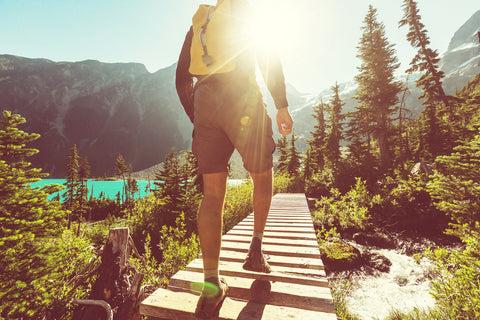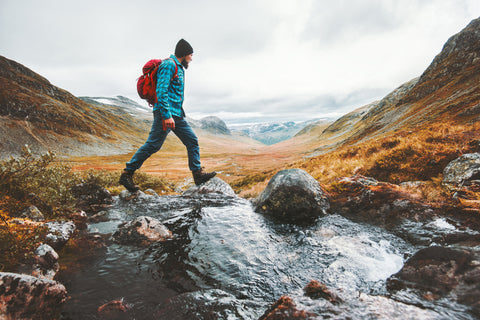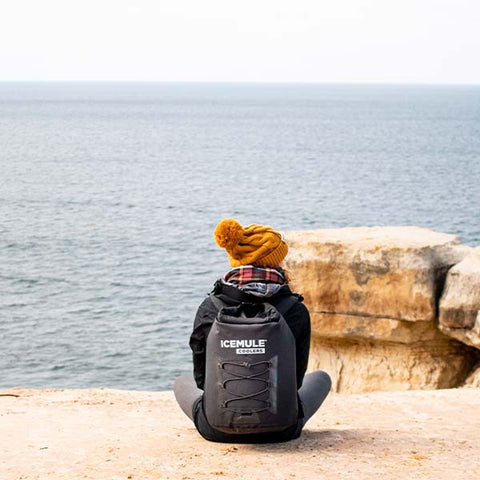
What To Bring on a Hike
Hikers learn over time what to bring and what to leave at home—often the hard way. If you are new to hiking, or have only done short trips for an hour or two, it can be helpful to get familiar with daypack fundamentals. With a prepped daypack, you’ll always know what to bring on a hike, and be ready to hit the trail the moment you decide on your destination.
Hikers debate what to bring on a hike, but we’ve found that these essentials can prepare you for the most common emergencies without weighing you down.
Here’s what to bring on a hike, and most of it can live semi-permanently in your daypack:

1. Base layer or light jacket. Whether you're looking to crush a Colorado 14er or just trot around the nature park in your neighborhood, a base layer is never a bad idea. Even if you are hiking in 95 degree Arizona sun, you need protection, especially if you get stranded and have to spend a night outdoors. A lightweight base layer (especially upper body) or compact warm jacket should be parked in your pack and occasionally aired out.
2. Rain poncho. These cost 2.99 at most and are extremely useful as mini-tarps, ground cover, and protection from rain for you or your gear. Better yet, grab yourself a full-on rain jacket!
3. Water. We recommend at least 32 - 64 ounces in a lightweight but durable canteen or jug. Wide mouth bottles are preferable as they are easier to fill and use if you have to tap a secondary water source. Gauge water needs based on the climate, heat and availability of water sources.
4. Iodine tablets and taste neutralizer tablets. These are lightweight and last a long time. They can be pocketed in your daypack just in case, and make almost any water drinkable. They aren’t the first item that comes to mind when you consider what to bring on a hike, but in the rare instance you run out of water these tablets are invaluable.
5. Back up energy source. We recommend energy gel packs or bars. A can of tuna or bag of nuts are good protein options, but don’t forget a tiny can opener.
Optional Yet Helpful Items

6. Salt tablets. These can be found in camp stores or online, and often include potassium, sodium and some sugar. They can be dissolved in water to replenish salts the body loses through sweat. Or, you could throw in a couple rehydration solutions that contain electrolytes!
7. Space blanket. Another very lightweight item that can be a lifesaver if you get stranded overnight, and works for impromptu picnicking.
8. Knife. A small but well-made pocket knife is always a multi-purpose tool.
9. Lighter. Bring two, as they are lightweight.
10. Headlamp. Today’s headlamps last forever, but do test it for battery life. If stuck after dark, this item is truly a morale booster. Some hikers prefer small flashlights, but headlamps are lighter weight and keep hands free.
11. First aid kit. A basic kit is invaluable, as bleeding on the trail is inconvenient, painful and usually unnecessary. Make sure the kit includes footcare items like “second skin” and a disinfectant such as hydrogen peroxide.
12. An extra pair of socks. Hiking can lead to wet feet and extra socks offer comfort and protection.
13. A wool (or other warm) cap. A warm cap does wonders for insulating the body. Unless you are in an area you know won’t get cold, pack one of these just in case.
14. Sunscreen. You can never have enough of this stuff.
15. A compass. Cell phones can fail, but a compass uses the earth’s magnetic field and knowing your direction is huge if you happen to get lost.
Since 99.8% of hikers reach their cars safely, of sound mind, and pleasantly tired, many don’t consider the after-hiking items as part of the “what to bring on a hike” list—but you will be thankful to have:

- Cold drinks. It’s completely worth the effort the throw a few in your IceMule cooler. Better yet, just lug your cooler on your hike with you!
- Flip flops or sandals for tired feet
- Extra water. If you don’t want to bring a cooler, at least stash some extra water in case you return to your vehicle parched.
Almost all the items above can be assembled ahead of time. You’ll be much likelier to hit the trail if you and your pack are ready to take off at a moment’s notice.
